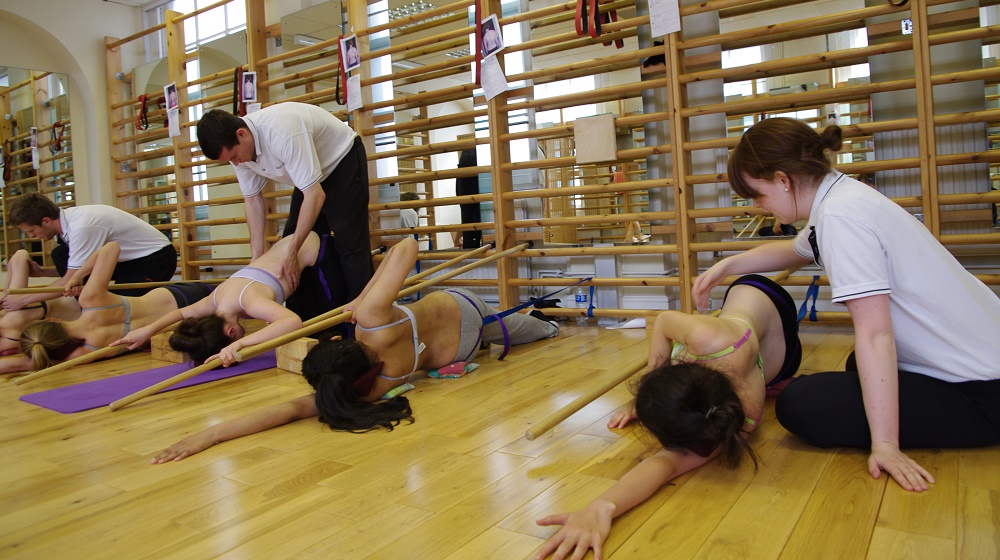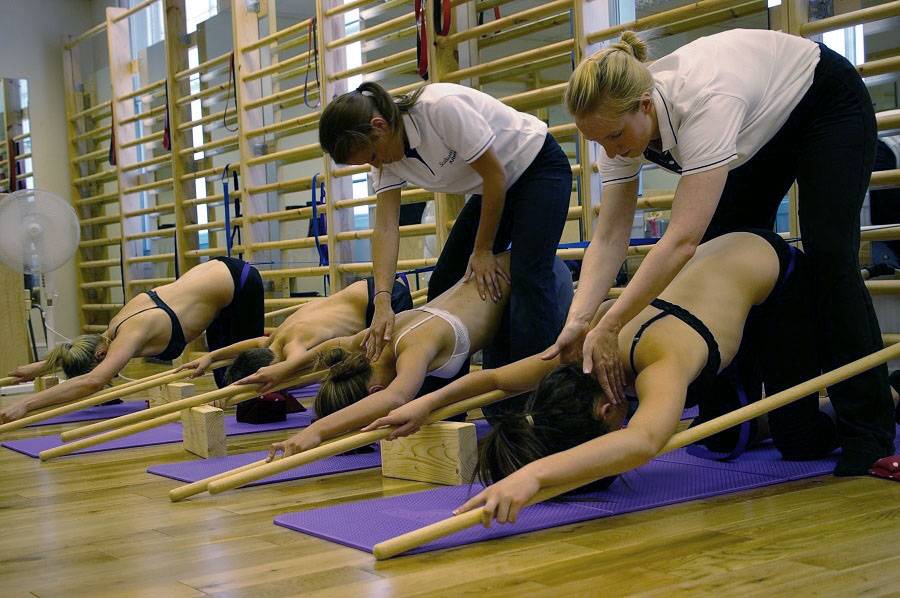Schroth Treatment is recognised around the world as the foremost specialist physiotherapy programme for the conservative management of scoliosis, either as a stand-alone programme or in conjunction with derivatives of Cheneau-Gensingen bracing.
The method was developed by Katharina Schroth who was born in 1894 in Dresden, Germany, and by the age of 16 was suffering from moderate scoliosis herself. After undergoing treatment with a steel brace and finding it heavy and cumbersome she began to develop her own more functional approach, with corrective breathing and over corrective positioning in front of a mirror.
By 1921, Schroth’s new method of treatment involving specific postural correction, corrective breathing patterns and postural perception, was being carried out along with rehabilitation exercises in her own clinic.
She and her daughter Christa Lehnert-Schroth opened an institute in Bad Sobernheim in West Germany which eventually expanded with a capacity to treat 150 inpatients at a time. The institute became the Asklepios Katharina Schroth Klinik in the 1980s.
As part of LOC’s scoliosis treatment package, our partner agency Scoliosis SOS will provide a comprehensive physiotherapy programme that adheres to the principles of the world-renowned Schroth Treatment.
At the initial consultation, a full specialist physiotherapy assessment is carried out with each patient to establish the most appropriate treatment, according to their spinal flexibility, age and the patient's own primary concerns. At this initial session, a postural programme and an individual exercise programme will be prescribed so that treatment can start immediately.

Image courtesy of ScoliosisSOS

Image courtesy of ScoliosisSOS
The programmes are not general physiotherapy as there is no evidence that general physiotherapy is any benefit to scoliosis patients. These programmes are curve-pattern specific and are individual to the patients’ own postural compensations and flexibility to manage, geared to address the patients' main concern– they are bespoke for each patient. Exercises can help to improve the length of the asymmetrical muscles, reduce rotational humps and prominences and prevent curve progression. In small immature curves, the exercises have been shown to help reduce the deformity (reduce the Cobb angle) without bracing.
In our dedicated scoliosis clinic, we have wall bars, poles, bean bags and cushions to help guide the physiotherapy exercises and positions. Exercises are tailor-made and therefore equipment is not always necessary for every patient.
In cases of larger thoracic scoliosis, rotational breathing can help de-rotate the scoliotic curve and stretch the muscles between the ribs which can be shortened or overlengthened. Patients will learn to use rotational breathing within their exercises to add to the 3-dimensional improvements and reduce rib cage deformity.

“It’s life-changing, my swimming coach has even remarked what a difference my treatment has made" Read how pectus bracing treatment helped to correct Aris' complex chest deformity, involving a combination of pectus excavatum, pectus carinatum and rib flaring.

Cerebral palsy patient Lucas sees significant improvement in his walking after only six months in his new custom Ankle Foot Orthoses (AFOs), designed by Professor Saeed Forghany in our Manchester clinic. Hear how a detailed gait analysis and bespoke AFOs significantly improved Lucas's gait and comfort.

Freddie’s positional plagiocephaly was treated successfully with the LOCBand Lite, going from 11mm to 2mm after four months in his helmet.

Adult club foot (talipes) patient Natasha says, "I cannot stress how amazing my AFOs are and how they have changed so much for me. The support they give me allows me to walk without crutches outside the house for the first time in over fifteen years."

Diagnosed with adolescent idiopathic scoliosis at 14 years old, Polly and mum Zoe looked to the LOC Scoliosis Brace to help her curve and avoid surgery at a later date.

LOC opens its first clinic in Northern Ireland, LOC Belfast, offer non-surgical orthotic treatment for scoliosis, pectus carinatum and pectus excavatum. Here, we will also be able to provide orthotic treatments for a range of adult and paediatric lower limb conditions including cerebral palsy, spina bifida, hypermobility, stroke, post-polio syndrome, and multiple sclerosis.

Mum Natalie shares her experience of having both her identical twins diagnosed with craniosynostosis. Ella and Nina had surgery at Great Ormond Street Hospital before going through cranial remoulding therapy at the London Orthotic Consultancy.

See how a thorough gait analysis and a correctly-fitted, bespoke Reciprocating Gait Orthosis (RGO) helped Ted, a spinal surgery and cancer survivor, improve his rehabilitation and mobility goals, getting him back on his feet again.